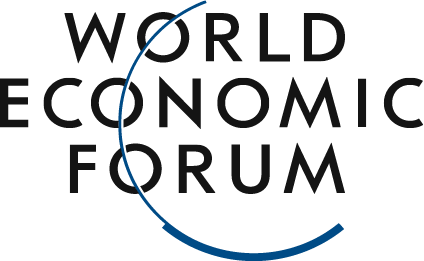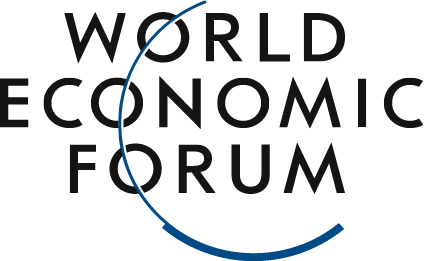Collaboration among the public, private, and philanthropic sectors can help address the shortage of women in STEM fields.
Image source:Getty Images/Lawrence Dutton
Ebru Özdemir
Chairman of the Board of Limark Holdings Company
Women make up just 28% of the global STEM workforce and 22% of AI professionals.
If left unaddressed, this talent gap will hinder innovation and economic growth during the skills retraining revolution.
Promoting collaboration, establishing mentorship programs, and providing tailored solutions to address the unique challenges faced by specific countries will help narrow the gender gap in STEM fields.
The Fourth Industrial Revolution marks the beginning of a new chapter in human development, bringing profound changes to how we work and live.However, every opportunity inevitably comes with challenges—most notably, the task of ensuring that 1 billion people by 2030 gain access to better education, skills, and economic opportunities, thereby fostering a more inclusive and future-ready global economy.Closing the gender gap in STEM fields is critical to achieving this goal. For instance, the global information technology industry is worth trillions of dollars and is projected to continue growing at a robust pace of up to 8% annually in the coming years. Yet, women still make up less than one-third (28.2%) of the workforce in this sector, and their representation among AI professionals is even lower, standing at just 22%. If these stark inequalities remain unaddressed, they will inevitably stifle innovation and economic growth.Skills retraining offers us a chance to rethink our future career plans. We need to reconsider not only *how* we work, but also *who* is working. If the Fourth Industrial Revolution is already reshaping the rules of work, now is precisely the time to rewrite those very rules.Lack of Gender Diversity in STEM FieldsOver the past decade, the number of women enrolling in STEM-related university programs has remained stagnant, with the reasons behind this gender gap varying by industry and region. However, if left unaddressed, this trend will only exacerbate the challenges of workforce retraining—estimates suggest that G20 countries could face losses exceeding $11 trillion over the next decade as a result.Multiple inspiring stories demonstrate how these barriers can be broken. Ritu Karidhal, one of the "Rocket Women" at India's Space Research Organisation, has inspired more and more women in India to pursue careers in STEM fields. And she’s certainly not alone: from Esraa Tarawneh’s work mitigating flash floods—helping multiple communities tackle one of the century’s greatest environmental threats—to Ayanna Howard’s assistive technologies, which have revolutionized accessibility for children with disabilities, women are leading groundbreaking innovations across the board.Gender-diverse teams are also more profitable and efficient. Companies with female representation exceeding 30% consistently outperform those with lower female representation in terms of financial performance. Additionally, gender-diverse R&D teams are significantly more likely to bring new innovations to market within two years.Building a fairer, more prosperous futureThe reasons for closing the gender gap in STEM fields are clear, but without deliberate intervention, this disparity will likely persist.Women face a variety of barriers when entering STEM fields. Solutions must address these real-world challenges head-on. In some regions, what we need to break down are the stereotypes that discourage girls from pursuing science. In other areas, the obstacles will lie in infrastructure—and ensuring access to resources and learning tools. Tackling these interconnected challenges requires localized strategies, which are essential for developing interventions that create lasting impact.By empowering leaders and local experts to take charge of problem-solving, these projects help foster new ways of thinking, challenge traditional barriers, and drive sustainable progress.For many young women, the lack of role models to look up to makes the path into the tech field feel distant—or even unattainable. Connecting aspiring scientists, innovators, and engineers with mentors who have navigated similar challenges can provide them with practical guidance and the confidence needed to succeed.The mentorship network is not just a support system—it also boosts confidence, enhances academic success, and accelerates career advancement. Research shows that, compared to those without mentorship programs, participants in mentorship initiatives can see their promotion and retention rates among women and underrepresented minorities increase by 15% to 38%.Through collaboration with the Global Network of Women Engineers, I’ve also witnessed firsthand how targeted initiatives can effectively address the underrepresentation of women in STEM fields. The Global Network of Women Engineers has already supported over 1,200 students and helped hundreds of women secure employment opportunities in Turkey, Kosovo, North Macedonia, and Saudi Arabia. Working alongside these remarkable women has taught me valuable lessons about how to tackle both the direct and systemic barriers they face.Enhancing equity, efficiency, and impact through collaborationThe path to narrowing the gender gap in STEM lies in fostering collaboration, establishing mentorship programs, and providing tailored solutions that address the unique challenges faced by each country. When it comes to encouraging more women to enter STEM fields, public-private philanthropic partnerships can help drive large-scale, impactful outcomes.The government can provide the framework and regulatory support to ensure broad coverage and equity, while the private sector takes responsibility for implementing efficient, flexible, and innovative solutions. Meanwhile, charitable partners ensure that these initiatives are both economically viable and aligned with the Sustainable Development Goals for human well-being.When these collaborations are united by a shared mission, they can create powerful synergies that drive impactful change. At Limark Corporation, we’ve successfully implemented and scaled this model across global markets, achieving remarkable results. For instance, in Kuwait, our collaboration with key government and private-sector partners has enabled the Kuwait Women’s Economic Empowerment Platform to champion women’s participation in the Fourth Industrial Revolution.When public, private, and charitable organizations collaborate, they can turn ambitious goals into tangible results.Unlocking women's potential in STEM fieldsThe Fourth Industrial Revolution will usher in transformations across industries, with some jobs disappearing while new ones emerge. The skills retraining revolution presents a rare opportunity for us to rethink the workforce entirely. Evidence suggests that a world investing in women within STEM fields would not only accelerate innovation but also enhance its ability to solve problems more effectively.Public and private stakeholders must take decisive action to ensure women are empowered to participate in and lead this new era. We need everyone’s involvement—especially those who are often overlooked.
The above content solely represents the author's personal views.This article is translated from the World Economic Forum's Agenda blog; the Chinese version is for reference purposes only.Feel free to share this in your WeChat Moments; please leave a comment at the end of the post or on our official account if you’d like to republish.
Editor: Wang Can
The World Economic Forum is an independent and neutral platform dedicated to bringing together diverse perspectives to discuss critical global, regional, and industry-specific issues.
Follow us on Weibo, WeChat Video Channels, Douyin, and Xiaohongshu!
"World Economic Forum"





